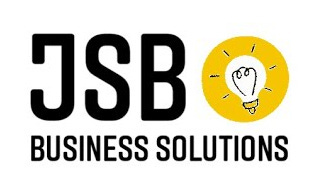The Power of Process for Small Business Growth
How will anyone on your team consistently perform tasks in a way that meets your expectations, if you do not provide them a process to follow?
What’s a Business Process?
A business process is a collection of steps that individuals must take to effectively achieve a specific business task or objective. Let’s consider a personal example, like getting a glass of orange juice from the fridge:
Process Name: Pouring a Glass of Orange Juice
Open the cupboard and select a juice glass
Place the juice glass on the counter
Open the fridge and select the orange juice
Place the orange juice on the counter
Open the orange juice
Pour the orange juice into the glass, until ¾ full
Place the orange juice back on the counter
Put the cap back on the orange juice
Put the orange juice back in the fridge.
Done!
“That is Obvious! I Don’t Need a Process For That.”
Indeed, this may be true for pouring your breakfast beverage of choice. (Though not if you ask your 6-year-old niece who is learning to prepare basic food items for the first time!)
But for business tasks that are more complex than orange juice, it is NOT safe to assume that your employees or partners know a) how to perform a business task or b) how to perform the task in the specific way you want them to.
You’re likely used to performing tasks by yourself, in a certain way. If you are a high achieving professional, you were likely rewarded for your own exceptional performance. You were rewarded for what you could do, and how you did it. And it took you years to prune and hone your approach and skills to making that happen. All this means that it can be difficult to make the transition to delegating tasks to others. You may not have much tolerance for others who lack your skills or don’t know your particular approach.
For example, imagine giving the marketing intern for your professional cleaning business a very clear task: “Please message 100 small business owners in Detroit metro on LinkedIn to ask what they do, and then see if they need our professional cleaning service.” In giving that instruction, you omitted a lot of important details without even realizing it! In your head, you meant: “Log into my LinkedIn account to send the messages because I have a more credible LinkedIn presence. A small business means it has 25 or fewer employees, and obviously Detroit metro includes northern Ohio as well since we can commute there to perform cleaning services.” Your intern, on the other hand: a) Used her personal LinkedIn account; b) Considered small businesses to mean anyone with 500 or fewer employees; and c) Made sure all business addresses were squarely in Michigan, excluding the Ohio market.
You may be frustrated, but you are responsible for this mix-up. Imagine if you’d given your intern a process flow diagram, with one of the first steps being: “Log in to Manager’s LinkedIn to send messages.” Then, you’d left a note with the definition of a small business and provided a list of zip codes that your company serves. Your results would likely be different, and this is the power of business process.
How to Create a Winning Process
In order to create a process that consistently achieves the desired result, it is required to know two things:
FIRST: Specifically what is my desired result? Identify a specific task or result that you would like to achieve over and over again in your business. For example, this could be: “Sell a copy of my workbook.” or “Onboard a new associate into my organization.”
SECOND: How have I achieved that desired result in the past? Think of things that you have done in the past that have successfully achieved your desired result. For example, “I sold a copy of my workbook by sharing a QR code link to it while I was networking at an entrepreneurship conference in downtown Detroit.” or “I onboarded a new associate into my organization after getting a reply when I cold messaged a handful of people on LinkedIn.”
From there, you can quickly extrapolate to see what kinds of business processes you should create:
Does your workbook sell like hotcakes at small business networking events? Then you need a process for “Finding & Registering for Small Business Networking Events,” and likely another process for “Documenting & Following Up with Networking Event Leads.”
Do you find that you always meet new team members to hire in your LinkedIn direct messages? Then you’ll need processes to “Automatically Send Connection Requests with LinkedIn Integrations” and “Automatically Schedule Coffee Chats with Calendar Integrations” to make your outreach process more efficient.
Why Processes Help Your Business Grow
Whether it’s today, yesterday (!), or sometime far in the distant future, you may wish for your business to grow beyond you. You may want to grow your business from a “team of me,” to a “team of we” and have other individuals perform some of your revenue generating activities (RGAs) and your administrative tasks on your behalf. Common reasons for this desire are to scale your business, generate more revenue, or enable business activities to transpire with less time and effort spent on your part as the business owner.
Think long and hard about this question: How will anyone on your team consistently perform tasks in a way that meets your expectations, if you do not provide them a process to follow? Answer: They will not. Like the marketing intern sending LinkedIn messages, they will need a process to achieve optimal results, and it is your job to provide it.
For this reason, you will want to be very intentional about documenting how you do things for your business over the course of time. Over the course of time, you want to be very intentional about documenting your scripts and inventorying what strategies and tools you are using. Why? When it’s time to grow from a team of ME to a team of WE, this process will reduce your hiring, training, and supervisory expenses, and likely your frustration and irritation too. Plan with the end in mind, so you will be prepared on the exciting day that you make your next hire!
What if It Isn’t Perfect?
It is also important to understand that “perfection” is not the goal when delegating work to others. If someone performs a task at 80% of what you normally do, there is still room for tremendous return on investment in hiring them.
Also, be careful not to fall prey to the mindset that “your way is the only way.” There are people who you employ or in your circle who have latent talents that can prove valuable to the growth of your business. If you squelch innovation or dissuade people from experimenting or exploring their gifts, you are not maximizing your investment.
Remember, there are people out there who can easily outperform you in areas that you are not highly effective at, and there are people who are more capable than you in areas you believe you are elite in.
Want to know the most important business process for predictable revenue generation? Read this article, and see how you can put it in action today!
Take the first step towards elevated performance by scheduling your consultation with JSB Business Solutions. Click this link and schedule a day and time that works best for you.
The world around us wasn’t built by the exceptional. It was built by everyday people who were willing to do exceptional things. Go build something.
Want to learn more about me? Visit my online profile here. Interested in collaborating, gain more insight by clicking here.

Thanks for reading The Grow Givers Project! Subscribe for free to receive new posts and support my work. And remember, sharing is caring






